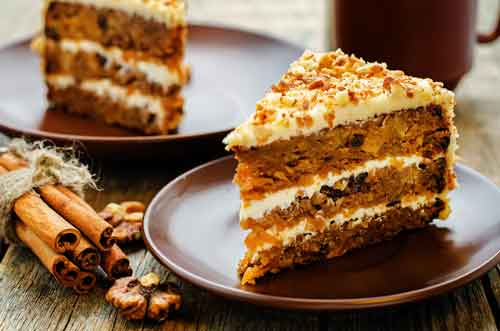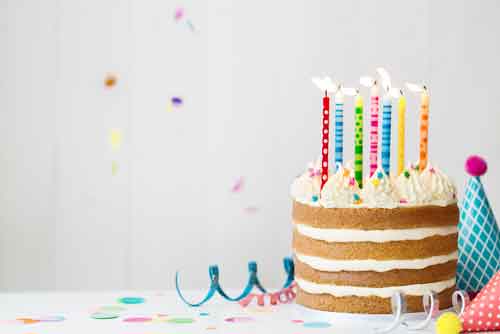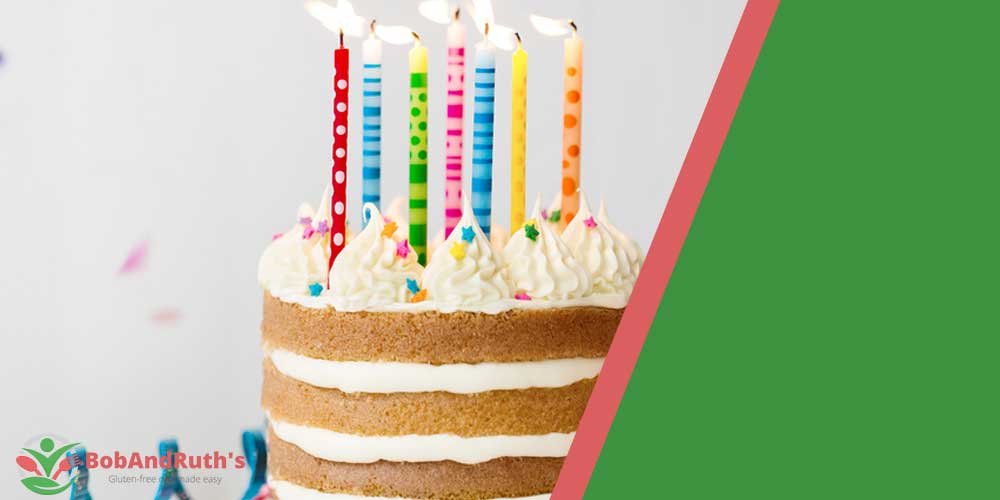Birthdays are special days that call for a big, tasty cake everyone can enjoy.
But some people get sick from a thing called gluten, which is in many cakes.
So, we’re going to make a special birthday cake that doesn’t have gluten.
This means everyone can have a piece and enjoy it!
We’ll show you how to make a cake that’s so good, you won’t miss the usual kind.
This cake is soft, sweet, and perfect for any celebration. Let’s make a cake that makes everyone happy and healthy.
Perfecting Birthday Cake Base: Gluten-Free Flour
When we talk about making a birthday cake that everyone can enjoy, even those who can’t eat gluten, we start with something very important: the flour.
Gluten is a thing found in regular flour that some people need to avoid for health reasons.
So, we use special gluten-free flour to make sure everyone can have a piece of cake without worrying.
The Secret to a Great Cake: Choosing the Right Flour
Not all flours are the same, especially when it comes to gluten-free options.
To make a cake that tastes good and has a nice, soft feel, we mix different kinds of gluten-free flours together.
What Goes into Our Gluten-Free Flour Blend:
- Rice Flour: This flour comes from ground rice. It’s a bit like the all-purpose flour used in regular cakes but without gluten. It makes the cake light and fluffy.
- Almond Flour: Made from ground almonds, this flour adds moisture so your cake doesn’t dry out. It also gives a slight nutty taste that makes the cake more interesting.
- Coconut Flour: This is flour made from dried coconut. It helps to make the cake a little sweet naturally and keeps the cake moist too.
Why These Flours?
- Gluten-Free: First, they don’t have gluten, so they’re safe for people who can’t eat gluten.
- Taste and Texture: Together, these flours make a cake that tastes amazing and has a soft, light texture. It won’t feel heavy or dense.
- Easy to Find: You can find these flours in most grocery stores now, which makes it easy to get what you need for your cake.
How to Mix Your Flour
Mixing your gluten-free flour blend is like making a magic potion for your cake.
You take a bit of rice flour, add some almond flour and coconut flour, and mix them all together until they’re well combined.
This blend is what you’ll use instead of regular flour in your cake recipe.
A Little Tip
When you’re measuring your flour, be sure to use a spoon to scoop it into your measuring cup and level it off with a knife. This helps you get just the right amount, so your cake turns out perfect.
The Quintessence of Flavor: Vanilla and Lemon
When making a cake that everyone will love, especially a gluten-free birthday cake, two flavors stand out for making it extra special: vanilla and lemon.
These two tastes come together to make the cake not just good, but something everyone will talk about.
Vanilla
Vanilla is like the best friend of flavors in a cake.
It’s warm, comforting, and makes everything taste better.
When you smell vanilla, you know something good is coming.
It’s a simple taste but brings so much joy and richness to our gluten-free cake.
We use pure vanilla extract in our recipe.
This means we’re using the real stuff from vanilla beans, not something made in a lab.
It makes a big difference because the real vanilla makes the cake taste homemade and very special.
Lemon
Lemon might not be the first thing you think of putting in a cake, but trust us, it’s a game changer.
Lemon juice adds a little bit of a tangy taste that cuts through the sweetness.
Think of it like a sunny day in the middle of winter—it just makes everything feel more alive.
The lemon doesn’t make the cake sour; it just adds a layer of freshness that makes all the other flavors pop.
It’s like when you add a splash of lemon to water; it just tastes better.
Bringing Them Together
When you mix vanilla and lemon together in the cake, it’s like they’re having a party, and you’re invited.
The vanilla brings the warmth and sweetness, while the lemon brings a fresh and zingy vibe.
This combination makes our gluten-free birthday cake not just another cake, but a treat that’s full of life and flavor.
It’s important to us that everyone can enjoy this cake, whether you know a lot about fancy food words or not.
We want you to know that when we say “The Quintessence of Flavor: Vanilla and Lemon,” we’re just talking about making sure the cake tastes amazing with these two simple, but powerful, ingredients.
It’s our way of making sure your special day is delicious, with every bite reminding you of the care and joy we’ve baked into your gluten-free birthday cake.
Sweetening Birthday Cake: Sugar Alternatives

When we bake our special birthday cake, we want it to be sweet and delicious.
But, not everyone likes to use regular sugar.
Some people look for different options either because they want something healthier or they have to watch their sugar intake for health reasons.
Here, we talk about some great choices that can make your cake just as sweet and tasty without using regular sugar.
Coconut Sugar:
First up, let’s talk about coconut sugar. This isn’t like your normal sugar.
It comes from the sap of the coconut tree and has a lovely caramel flavor, which can add a unique taste to your cake.
It’s also considered a bit better for you than regular sugar because it doesn’t make your blood sugar levels go up so quickly.
That’s a big plus for a lot of folks.
Powdered Sugar
Next, we have powdered sugar, which you might also know as confectioner’s sugar.
This sugar is really fine and soft, like snow.
It’s perfect for making the frosting on your cake smooth and spreadable.
While it’s still sugar, using it in your frosting can make your cake look and taste amazing.
Maple Syrup:
Last but not least, let’s talk about maple syrup.
This is the stuff you might pour over pancakes, but it’s also great in cakes.
Maple syrup is natural, coming from the sap of maple trees.
It brings a rich, deep sweetness to your cake and makes it moist too.
Plus, it’s another option that’s a bit better for you than regular sugar.
Mixing It Up
You can use these sugar alternatives in different parts of your cake.
Maybe you want the rich taste of coconut sugar in the cake batter, the smooth sweetness of powdered sugar in the frosting, and a drizzle of maple syrup in between the cake layers for extra moisture and flavor.
It’s all about making your cake taste great while also keeping it a bit healthier.
Everyone Can Enjoy
Using these sugar alternatives means more people can enjoy your cake.
Some folks might need to stay away from regular sugar because of health issues like diabetes, or maybe they’re just trying to eat less processed sugar.
By choosing these alternatives, you’re making sure that everyone can have a slice of your delicious gluten-free birthday cake without worrying.
Achieving the Perfect Consistency: Wet Ingredients
When we talk about making the cake mix just right, especially for a gluten-free birthday cake, we mean getting the wet ingredients perfect.
This is super important to make sure your cake is moist, soft, and yummy, not dry or crumbly.
Let’s explain why each ingredient is key to your cake’s success.
Wet Ingredients: The Magic Liquids
Full Fat Coconut Milk
- What it is: This is the thick, creamy liquid you get from the flesh of coconuts. It’s not the juice inside a coconut but the one that comes in cans or cartons.
- Why we use it: Coconut milk makes the cake super moist and rich. It’s like using whole milk in a regular cake, but it’s great for anyone who doesn’t eat dairy (milk from cows).
Almond Milk
- What it is: Made from almonds, this milk is light and has a nice, nutty taste.
- Why we use it: Almond milk adds moisture to the cake without making it too heavy. It’s another awesome choice for folks who stay away from cow’s milk.
Vanilla Extract
- What it is: This is a liquid that tastes like vanilla. It’s made by soaking vanilla beans in alcohol and water.
- Why we use it: Vanilla extract adds a warm, sweet flavor. It makes your cake taste like…well, cake! It’s the secret to that classic birthday cake taste.
Lemon Juice
- What it is: Juice from lemons – the sour, yellow fruit.
- Why we use it: Lemon juice adds a tiny bit of tanginess that wakes up all the other flavors. It’s like a little splash of sunshine in your cake.
Apple Cider Vinegar
- What it is: A type of vinegar made from apple cider. It’s a bit tangy and sweet.
- Why we use it: This might sound weird in a cake, but it’s a game changer. It reacts with the baking soda to make the cake rise and become fluffy. You won’t taste it at all in the finished cake; it just does magic to make the cake light.
Mixing It All Together
Getting these wet ingredients right means mixing them together before adding them to the dry stuff (like the gluten-free flour and sugar).
You want to mix until everything is just combined.
Don’t overdo it; stir gently until you can’t see any more dry flour.
Over-mixing can make the cake tough, and we want it soft and tender.
Why It’s Important
These wet ingredients do more than just add flavor.
They help the cake stay moist and tender, which is especially important in gluten-free baking.
Gluten-free cakes can sometimes be a bit dry, but with the right mix of these magic liquids, your cake will be so moist and delicious that everyone will love it, whether they need to avoid gluten or not.
There you have it! Using full fat coconut milk, almond milk, vanilla extract, lemon juice, and apple cider vinegar in the right way can make your gluten-free birthday cake a big hit.
It’ll be so good that people will ask for seconds, and they might not even guess it’s gluten-free!
Assembling the Best Gluten-Free Cake: Layers and Frosting

Putting together your gluten-free birthday cake is like building a beautiful tower, layer by layer, until you reach the top.
It’s simple and fun! Here’s how to do it step by step.
First Step: The Cake Layers
Imagine you have two big, soft cookies. These are your cake layers.
You want to stack them on top of each other, but you need something to stick them together.
That’s where the frosting comes in.
- Placing the First Layer: Take one of your cake layers (the big soft cookie) and put it on a plate. This is the bottom of your cake.
- Adding Frosting: Now, take some of your sweet, creamy frosting—this is like a very thick and tasty glue made from sugar and butter. Spread it all over the top of the bottom cake layer. Don’t be shy; cover it with a nice, thick layer. This not only sticks the two layers together but also adds delicious flavor in the middle.
Second Step: The Frosting
The frosting is what makes the cake look good and taste even better.
It’s sweet, creamy, and spreads all over the cake.
- Adding the Second Layer: Next, carefully pick up the second cake layer and gently place it on top of the first layer that you just covered with frosting. Now you have a cake tower!
- The Crumb Coat: Before you make your cake look pretty with more frosting, you want to put a thin layer of frosting all around the cake. This is called a “crumb coat,” and it’s like a base coat of paint that catches all the loose crumbs. It makes sure that your final layer of frosting is smooth and crumb-free. Use a knife or a spatula to spread this thin layer, then put the gf cake in the fridge for a little while to let this base layer harden a bit.
Third Step: The Final Touches
After your crumb coat is set and no longer sticky, it’s time to make your cake beautiful.
- Final Frosting Layer: Take your cake out of the fridge. Now, put a lot of frosting on top and around your cake. Use a knife or a spatula to spread the frosting all over the cake. You can make it as smooth as you like or use the spatula to make little peaks and designs.
- Decorate: This is the fun part! You can put anything you like on top of the cake to make it special. Sprinkles, candles, fruit like strawberries, or for a chocolate cake, chocolates can make your gluten-free birthday cakes look fancy and ready for a party.
Conclusion
Making a cake that everyone can enjoy, even if they don’t eat gluten, is special.
It means everyone can be part of the fun and no one is left out.
Our recipe for a gluten-free birthday cake is not just about making a cake without gluten.
It’s about creating moments of happiness that everyone can share.
We’ve shown you how to pick the best ingredients like gluten-free flour blend, almond flour, and coconut flour to make sure your cake is soft and tastes great.
We talked about using natural sweeteners like coconut sugar and maple syrup to make your cake sweet without using too much regular sugar.
We also explained how to make your cake moist and delicious with things like full-fat coconut milk and vanilla extract, and how to make a creamy, dreamy frosting without dairy.
Baking this cake means you’re thinking about everyone’s health and happiness.
It’s a way to show love and care. With our guide, making a gluten-free birthday cake is easy and fun.
And when you’re done, you’ll have a beautiful, tasty cake that proves you don’t need gluten to make something truly special.
This cake isn’t just a treat; it’s a way to bring everyone together, no matter what they can or can’t eat.
Remember, good food is about making everyone feel welcome and included.
And with this gluten-free birthday cake, you’re doing just that.
So, let’s bake with love, share with joy, and celebrate every moment with a slice of cake that everyone can enjoy.
Here’s to making everyone feel special and included, one delicious gluten-free cake at a time.
Happy baking!
Frequently Asked Questions (FAQs)
What is gluten free cake made of?
Gluten free cake is made without wheat or any ingredient that has gluten. Instead, it uses other kinds of flour like rice flour, almond flour, or a special mix made just for gluten free baking. It also has usual cake ingredients like sugar, eggs, and butter or oil.
What cakes do not contain gluten?
Cakes made with flours that do not come from wheat, barley, or rye do not contain gluten. Some examples are cakes made with almond flour, coconut flour, or a special gluten free flour mix. Many types of cakes, like chocolate, vanilla, or lemon, can be made gluten-free.
What makes a gluten-free cake rise?
Gluten-free cakes rise because of baking powder or baking soda. Sometimes, recipes also use vinegar or lemon juice to help these ingredients work better. This makes the cake light and fluffy, even without gluten.
What is the difference between gluten-free cake and regular cake?
The main difference is the flour used. Regular non-gluten-free cake recipes are made with wheat flour, which helps the cake hold together and become fluffy. Gluten-free cakes use different kinds of flour that do not have gluten. Sometimes, gluten-free cakes might have a different texture or taste because of the different flours, but they can still be very delicious and fluffy when made the right way.

Best Gluten-Free Vanilla Birthday Cake Recipe
This gluten-free cake recipe makes a delicious birthday cake that everyone can eat, even if they can’t have gluten. It’s a vanilla cake that’s sweet, soft, and perfect for parties.
Prep Time 20 minutes
Cook Time 30 minutes
Cooling 30 minutes
Total Time 1 hour 20 minutes
Course Dessert
Cuisine American
Servings 8
Calories 350 kcal
-
Two cake pans
-
Big bowl
-
Mixer
-
oven
For the Cake:
- 2 cups gluten-free flour blend
- 1/2 cup almond flour
- 1/2 cup coconut flour
- 1 teaspoon baking powder
- 1/2 teaspoon baking soda
- 1 cup coconut sugar (or regular sugar)
- 1 cup full fat coconut milk
- 1/2 cup almond milk
- 1 tablespoon vanilla extract
- 2 tablespoons lemon juice
For the Frosting:
- 1 cup vegan butter
- 4 cups powdered sugar
- 2 teaspoons vanilla extract
- 2-4 tablespoons almond milk (as needed)
Mix Wet and Dry Stuff for Cake:
- In a big bowl, mix gluten-free flour blend, almond flour, coconut flour, baking powder, and baking soda.
-
Mix Wet Stuff: In another bowl, mix coconut milk, almond milk, vanilla, lemon juice, and sugar.
-
Mix Wet and Dry Together: Pour wet mix into dry mix. Stir just until mixed. Don’t stir too much.
Put Cake Together:
- When the gluten-free vanilla cake is cool, put one layer on a plate.
-
Spread frosting on the first layer.
-
Put the second layer on top.
-
Cover the whole cake with more frosting.
-
Put the cake in the fridge for 30 mins, then add more frosting to make it look nice.
- Let the cake cool before you put frosting on, or the frosting will melt.
- If the frosting is too thick, add a little more almond milk.
Enjoy your special gluten-free birthday vanilla cake recipe!
Calories: About 350 per slice


